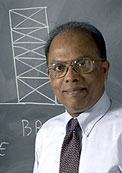|
|
One is development of an integration web. We got the idea from the Food Web in the food sciences, a disciple, and the food. The integration Web is basically a diagrammatic or graphical representation of all the components of a tall building. That also includes sustainability issues. And to sort of show the linkage between all these components so that we can say that this item is related to that and that item is related to that. So it's a chart. And we also found this interestingly in the, the aircraft industry. Of course, their charts are very complex. But we learned a lot from their industry as well.
Now there are many physical systems in tall buildings, just as in any other building. These basic systems are architectural systems, structure, mechanical systems, plumbing and electrical. And of course, there are many subsystems. And we can sort of compare them with our body, human body. For example, the façade is like the skin. The structure is like the skeleton. You know, the, the heart is like a pump. The blood circulatory system is basically related to plumbing, and plumbing system has a lot of pumps also. The electrical system is more like our nervous system. The way we function every system is dependent on the other and each system is important and we are basically very, very well integrated. So likewise, we looked at tall buildings as a very integrated system. So the integration wave was the first thing and the second thing was technology transfer.
We studied the aircraft industry and also the automobile industry just to see what we can learn from them because those systems are also very complex. Especially the aircraft industry and we learned a lot about the aircraft industry definitely. We also looked at few other areas like nano technology, and we are still working on that. Of course we also incorporated the intelligent building systems. Which are as you know, getting more and more popular as we are in a computer era right now. And it's getting better and better, more and more pervasive. So, in terms of intelligent buildings we look at structures, facilities, automation and control systems, services and who are the users and of course the building management system which is the BMS.
>
01 02 03 04 05 06 07 08 09 10 11 12 13 14 15 16 17 18 |
|
 |
Mir M. Ali, PhD
University of Illinois at Urbana Champaign
2006 RFP Recipient
|
|
